It’s been a long while since my last blog post, party because I haven’t had time for writing, but mainly because I just haven’t done much birding. This is a tale of a few summer (and early autumn) visits to Tolderol Game Reserve, with a passing thought about the “logic” of birding and some ramblings/reminiscing about REGUA in Brazil.
Tolderol is a local wetland about 50mins south of Adelaide on the edge of Lake Alexandrina (freshwater estuary of the River Murray). When we arrived in SA in spring of 2012 Tolderol was a mythical place that birders (and duck hunters) past had visited, but was now non-existent, having dried up through a combination of severe drought in 2010/11 and a broken pump that no-one had the money or the will to fix.
A few years ago, perhaps 2014 IIRC, money was found and some local volunteers (followed by the Dept of Environment, Water, Natural Resources) set about getting the pump running and restoring the wetland to its former glories. Since then, in a remarkably short space of time, it has turned into one of the best sites in the state for waders, bitterns (both Black-backed and Australasian have bred), terns, and other waterbirds, not to mention it being snake-city-central, with Eastern Brown, Tiger and Red-bellied Black all present in good numbers. Just goes to show, if you create the habitat, nature will find it! Reminds me of my visit to REGUA in SE Brazil more than a decade ago. A magic spot of forest regrowth and restored wetland in the Serra Dos Orgaos mountains NW of Rio — then only 3 years old — produced Capybara, Cayman and more than 100 birds species in a pre-conference weekend visit (see my report here). I digress…
Actually, let me digress even further, and consider what this has got to do with the logic of birding? Well, one bird that shows up semi-regularly at Tolderol but which I have never seen in Australia is Long-toed Stint (LTS) and on each occasion that I have visited in the last few months I’ve tried hard to find one as it burns a bigger and bigger hold in my Australian list. Regular reports have been forthcoming of one or two, and even one report of 4 birds but I failed to connect. Why would I want to see this species, having seen it well in Philippines and Thailand? Well, that’s where logic goes out the window. It must have to do with my list. But I refused to twitch the Citrine Wagtail in Whyalla in early Jan for similar reasons, so what was different? Not much, truth be told. The only conclusion I can draw is that it’s best not to analyse the hobby too logically, lest the obvious conclusion arise that it’s a stupid pass-time and nothing is worth travelling for.
Anyway, back on topic — I picked up some nice species over 3-4 visits in the early part of 2019, mostly waders, and this post summarises some (though not all) of the observations (full lists on ebird).
On 5th Jan I was surprised to find as many as 20 Marsh Sandpipers. Normally fairly scarce, I’d seen only 3-4 in the State prior to this visit. One on Bay 4 posed particularly well.
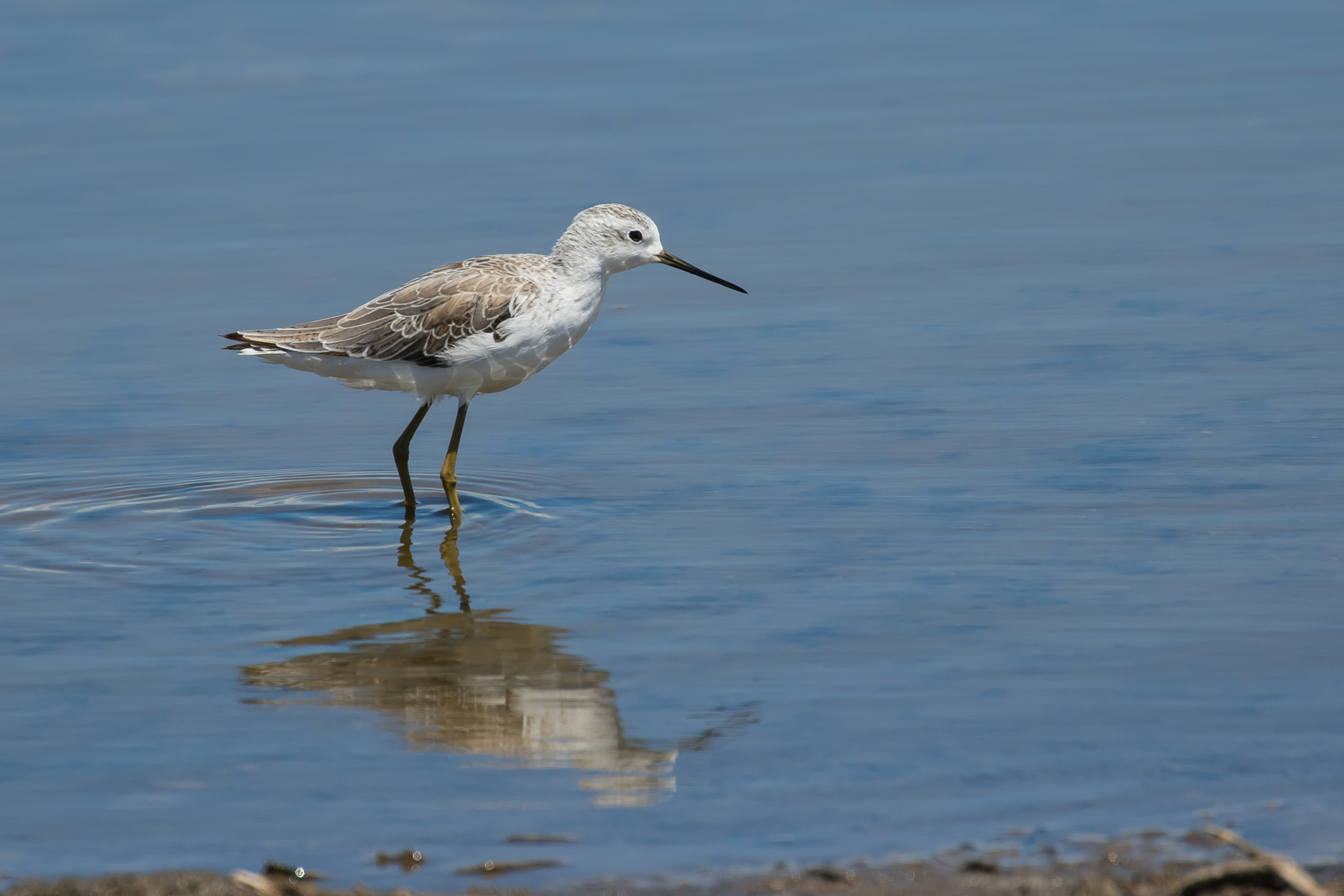
Hundreds of Whiskered Terns swooped along the channels and across the ponds.
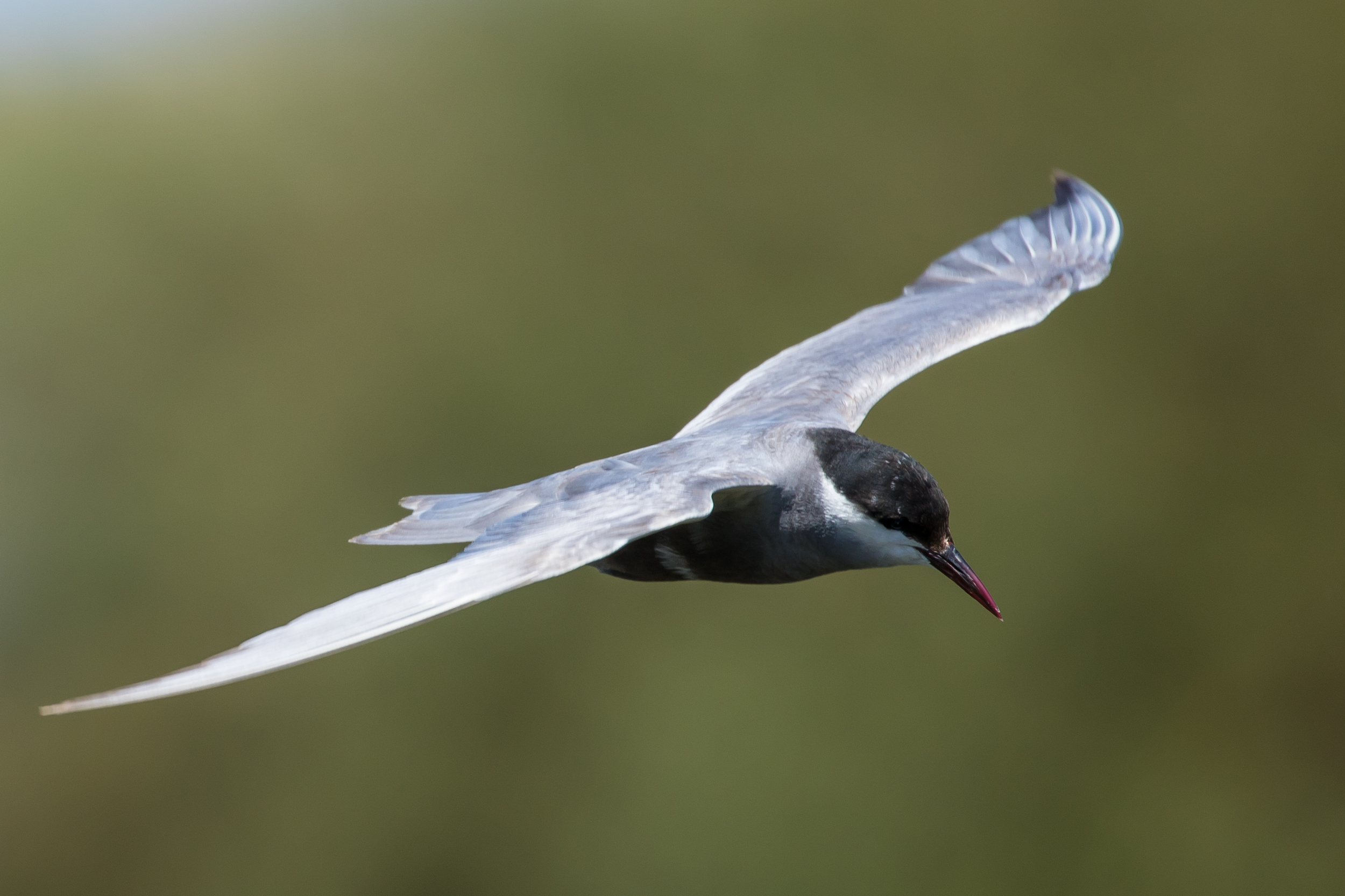
Just over a week ago I had some more time for birding (been spending a lot of time on my bike recently and it tends to be one or t’other on weekends, rarely both) and popped down late morning. I spent a couple of hours just scanning ponds 4 and 17 but did not find a LTS. I did, however, find this Pectoral Sandpiper. They look very similar to Sharp-tailed Sandpipers, but when you see one, it does stand out. The diagnostic sharp delineation of the breast markings from the white belly is clear in the pic even though its a big crop of a fairly distant bird, and on closer inspection of the pic you can also see the slightly longer bill with more orange at the base.
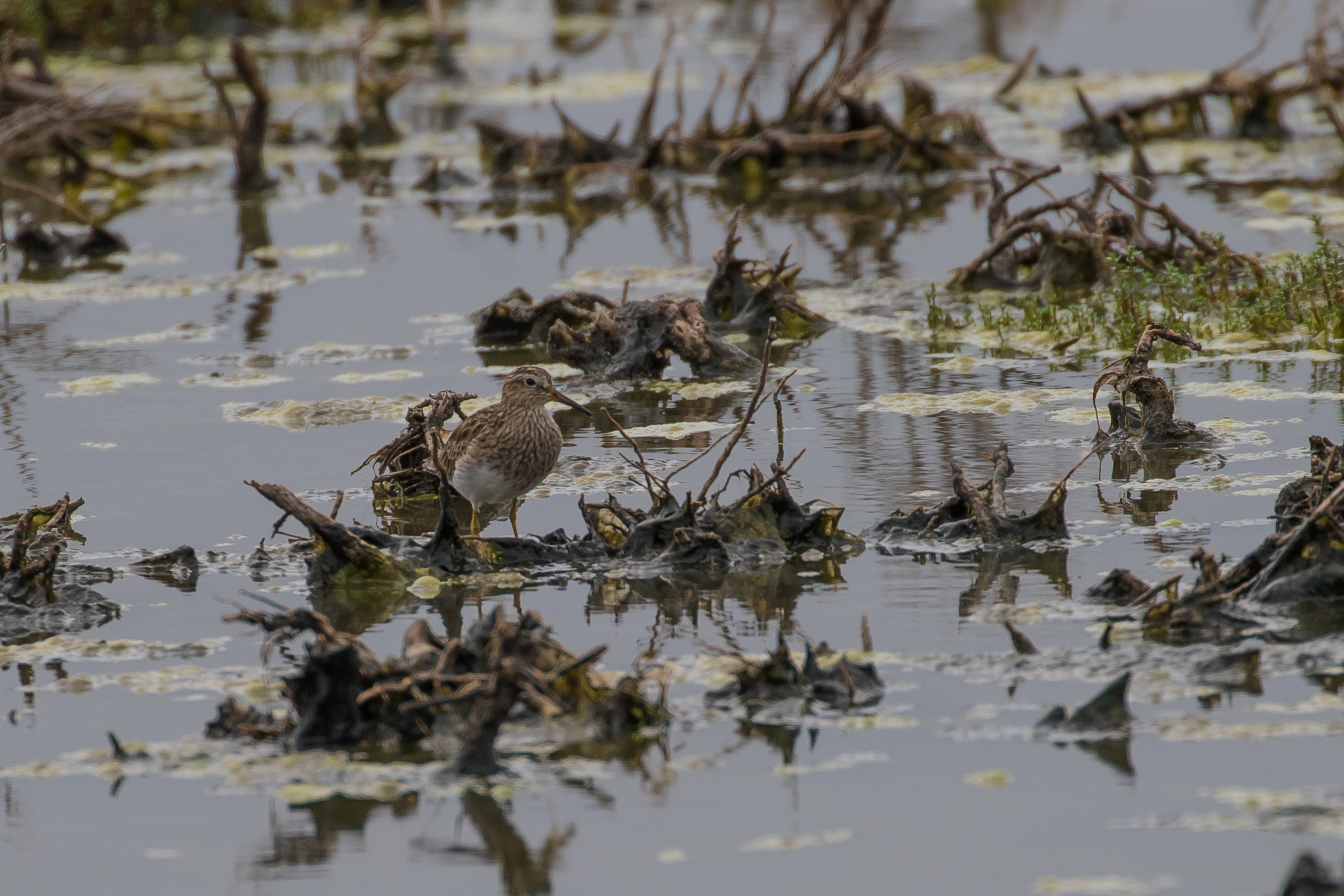
And a Double-banded Plover only about 15-20m away from the Pec at the top of Pond 4.
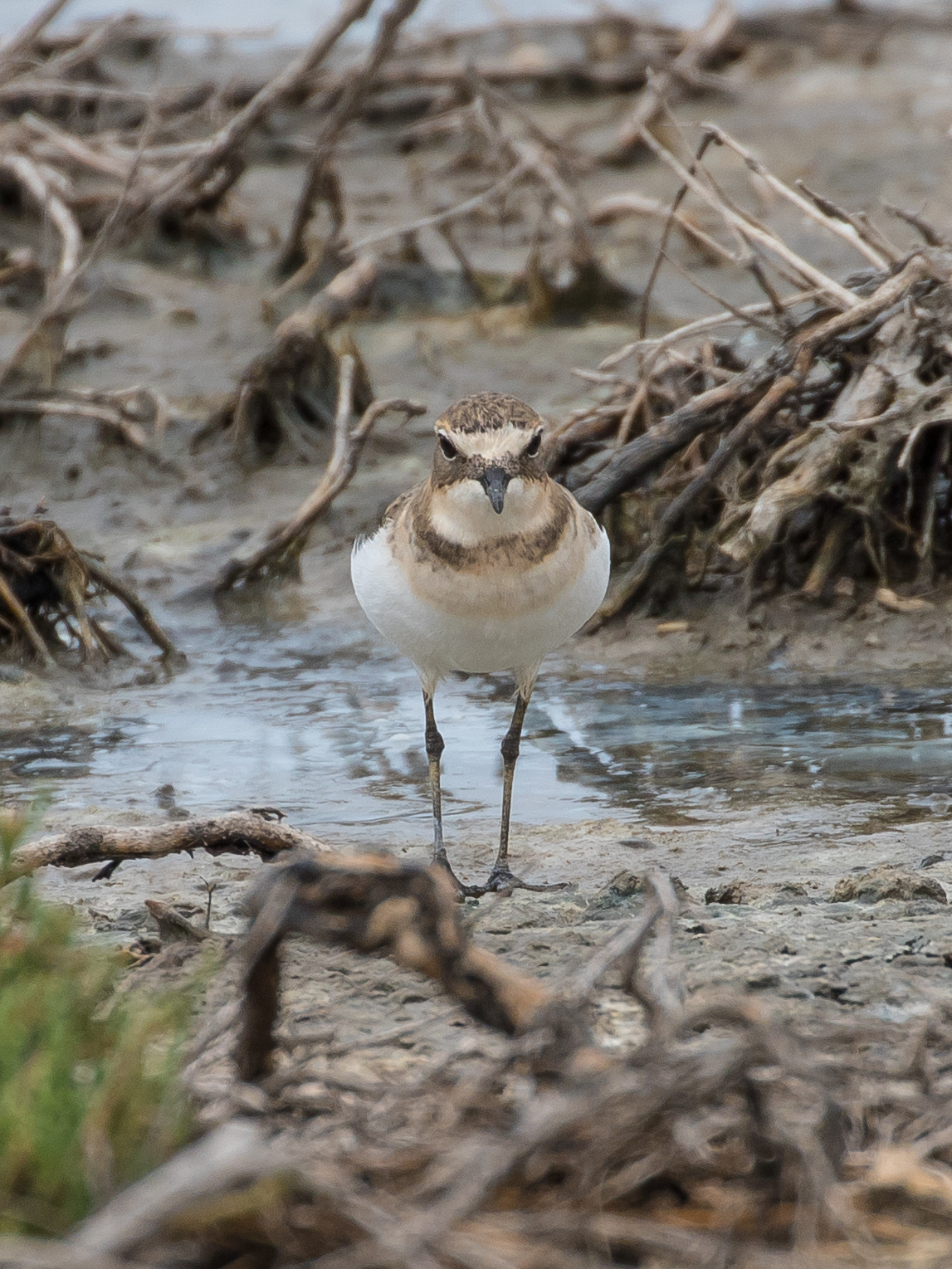
The Marsh Sandpipers were still present in good numbers.
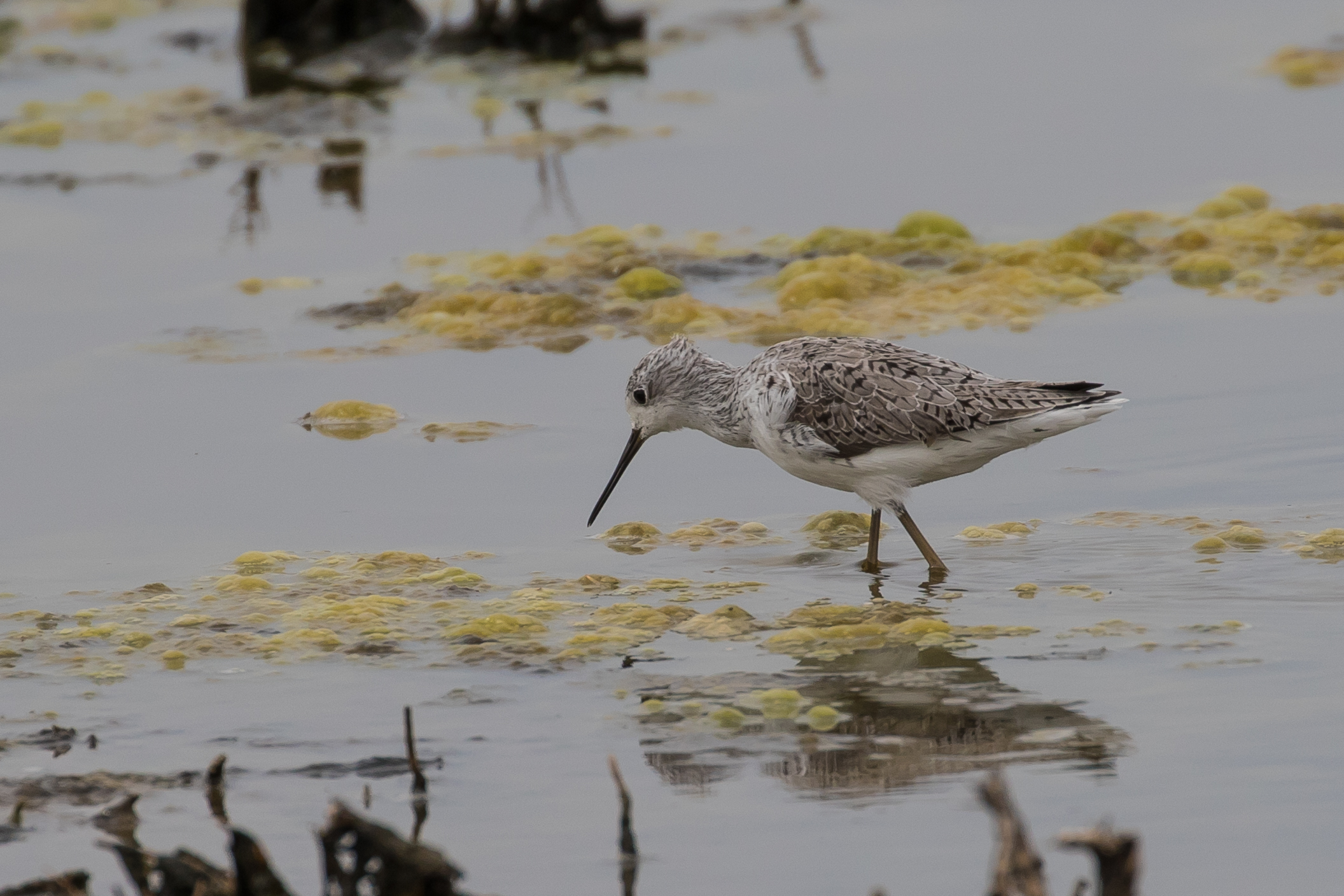
Sharp-tailed Sandpiper are the commonest wader here. This one posed nicely next to some Samphire so was worth capturing to the CCD.
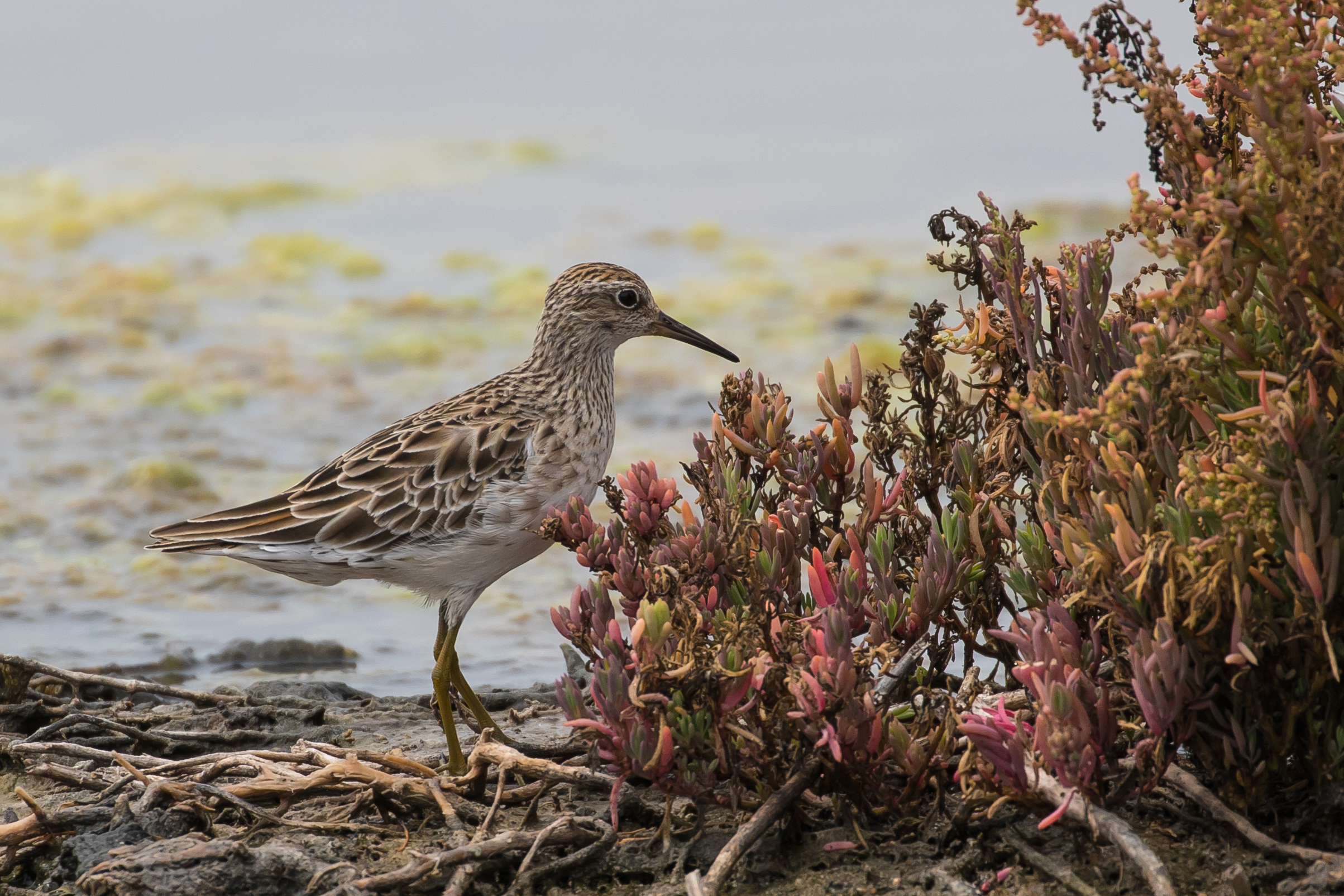
I had another crack this last weekend (10th March). This time I managed to drag Paul Coddington out into the field. Like me, he has been snowed under with work (maybe even more-so than me) so this was just about his first birding since the summer holidays! We drove around most of the active basins enjoying good numbers of birds, with waders and crakes all fairly tame, especially on Pond 8 where we had around 20 Curlew Sandpipers (including one bird almost in full summer plumage, though not close enough for decent photos) and at least 4 Spotted Crakes (to add to a Spotless and 2 other Spotted on Pond 5):
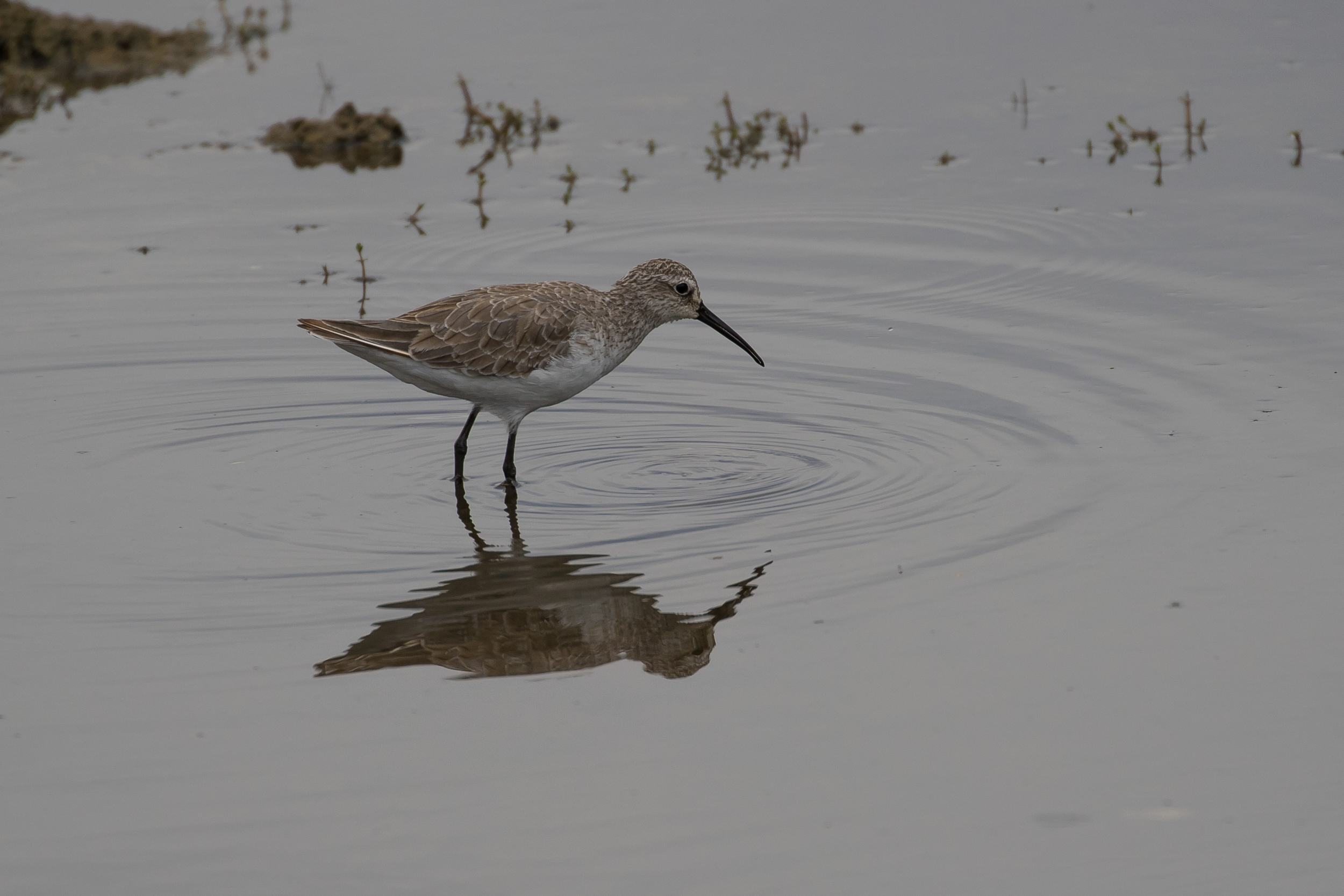
Curlew Sandpiper 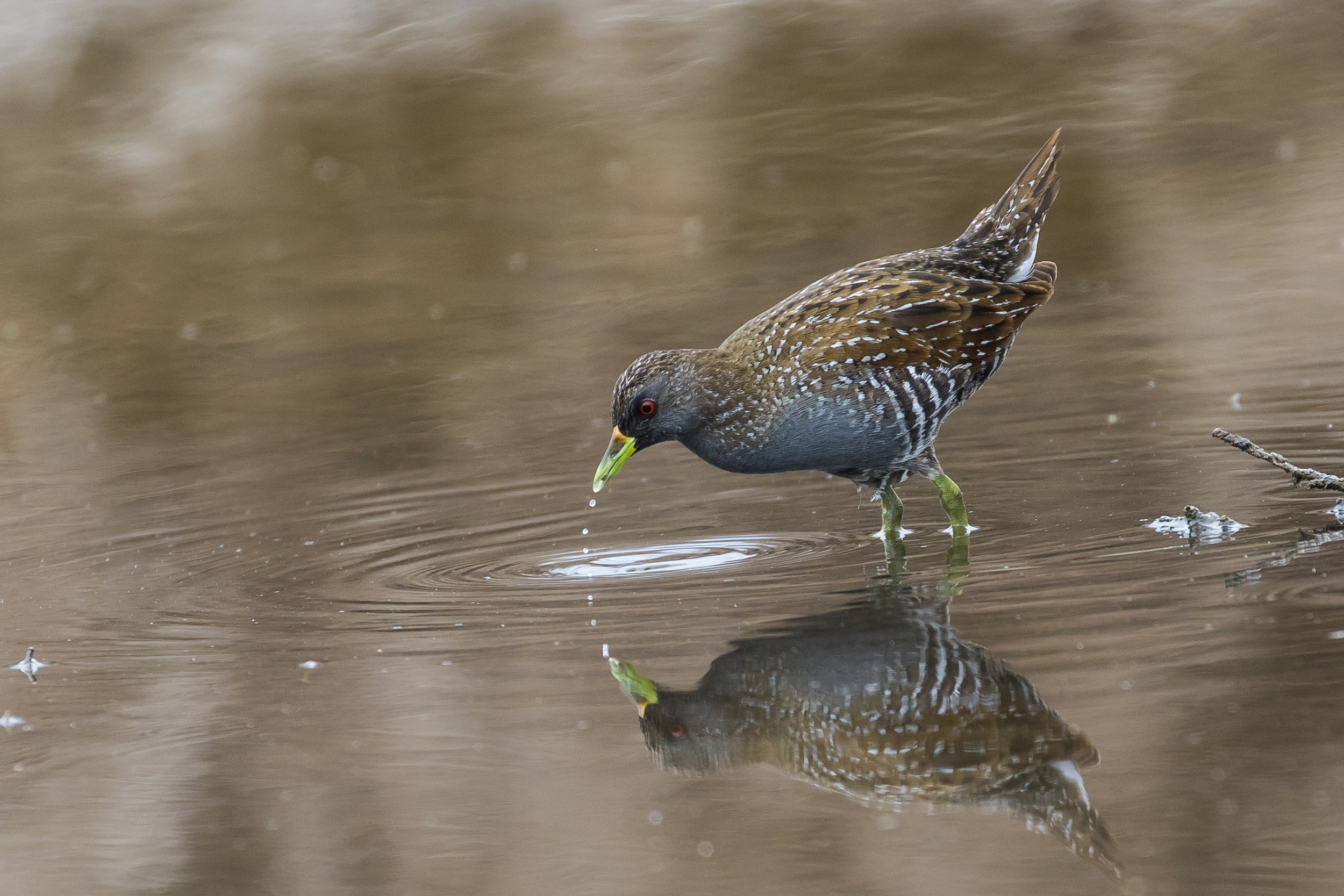
Australian (Spotted) Crake
The first good bird we had of the morning was as Pectoral Sandpiper, maybe the same bird I’d had last week because it was not far from the spot from 3rd March, though in 17 on the other side of the causeway from last week.
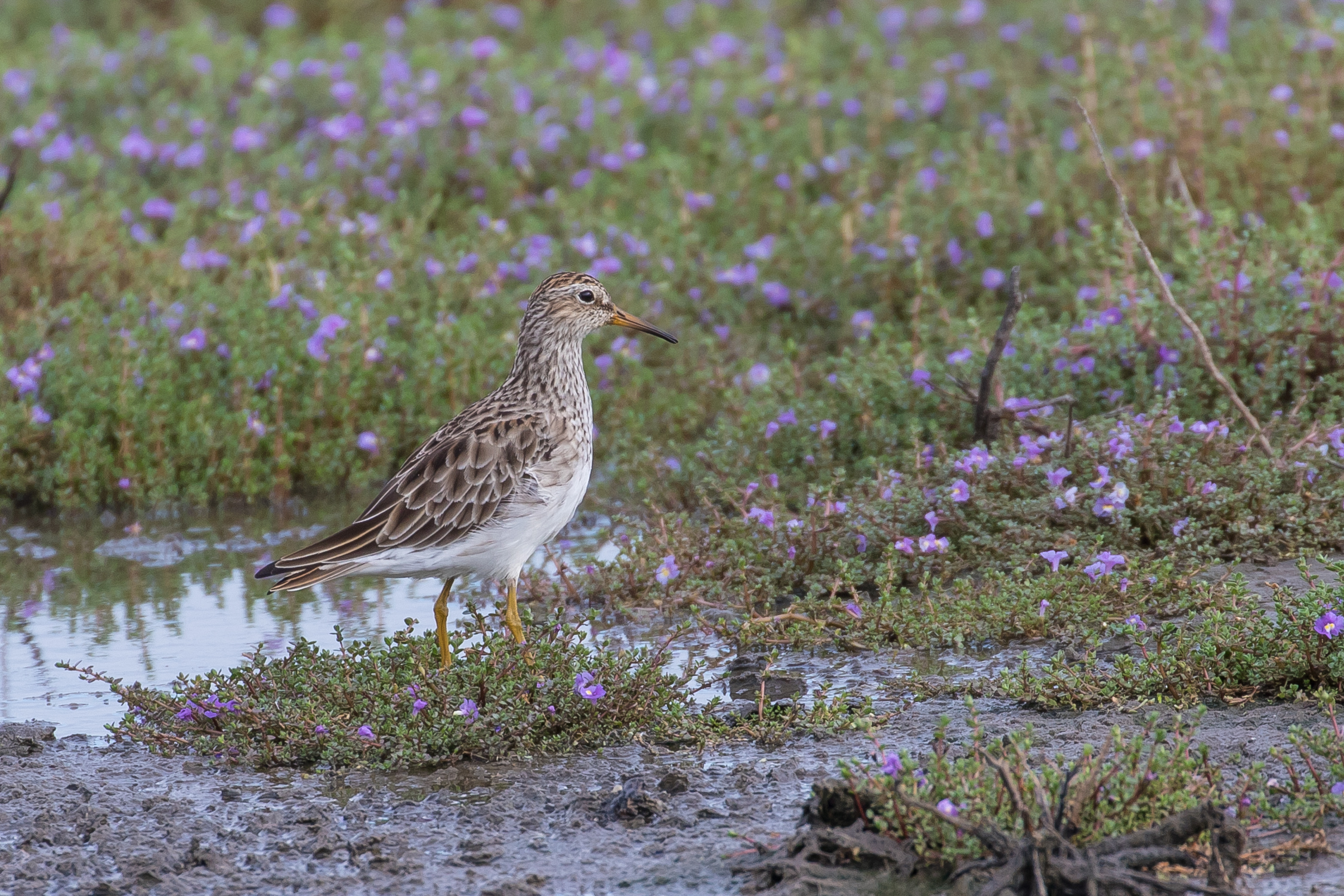
A lone Red-necked Avocet on Pond 6 was unusually close. Inspection of my pics when I got home suggest that this bird has a broken upper mandible :-(.
And lots of red-kneed Dotterel posed well.
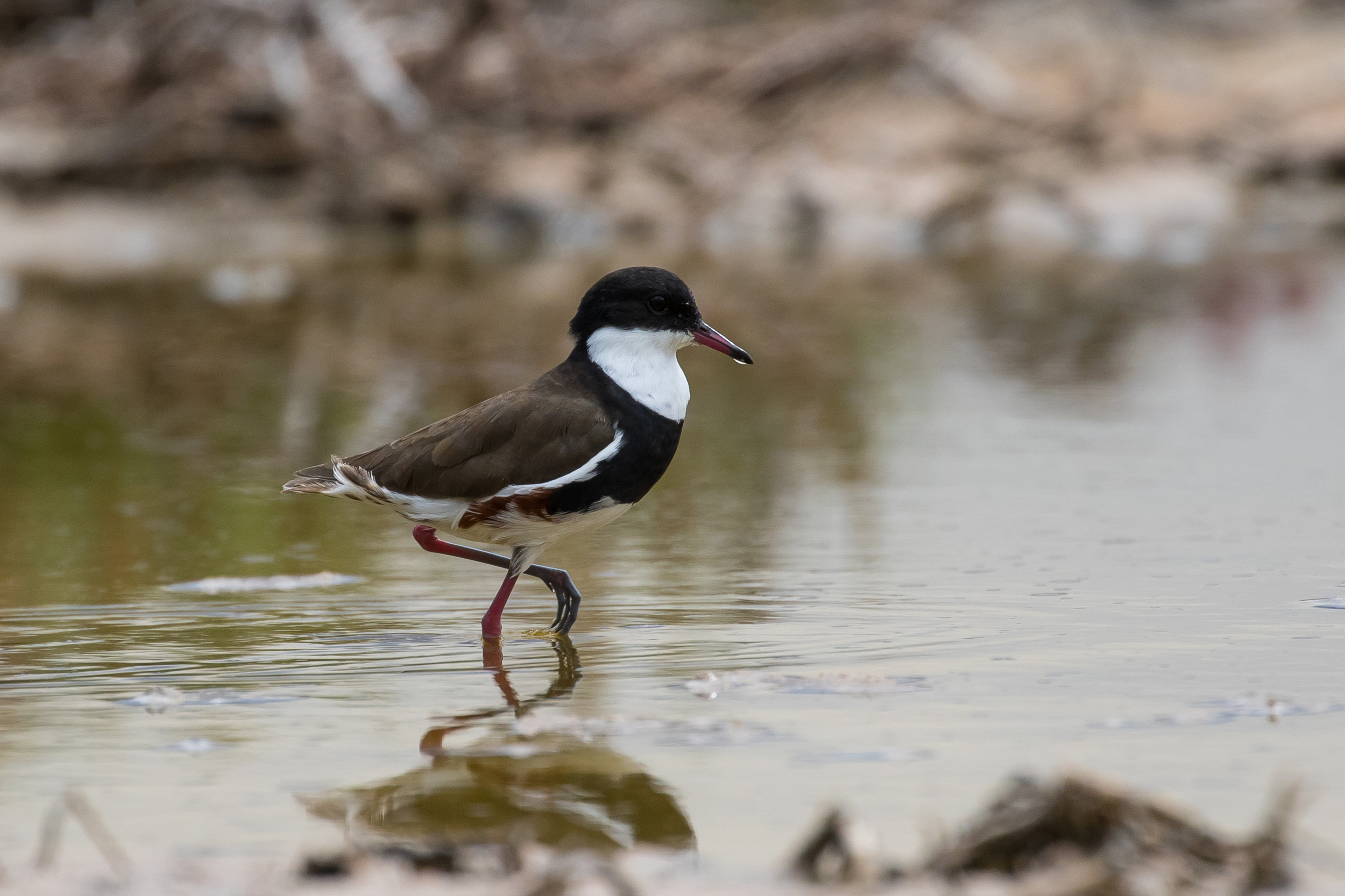
Tummies rumbling and pub in Langhorne Creek beckoning, we made a final recce down the south shore of Pond 4. It finally turned up trumps. First I picked up a Pacific Golden Plover (in the end we found 5 of these including one coming into summer plumage).
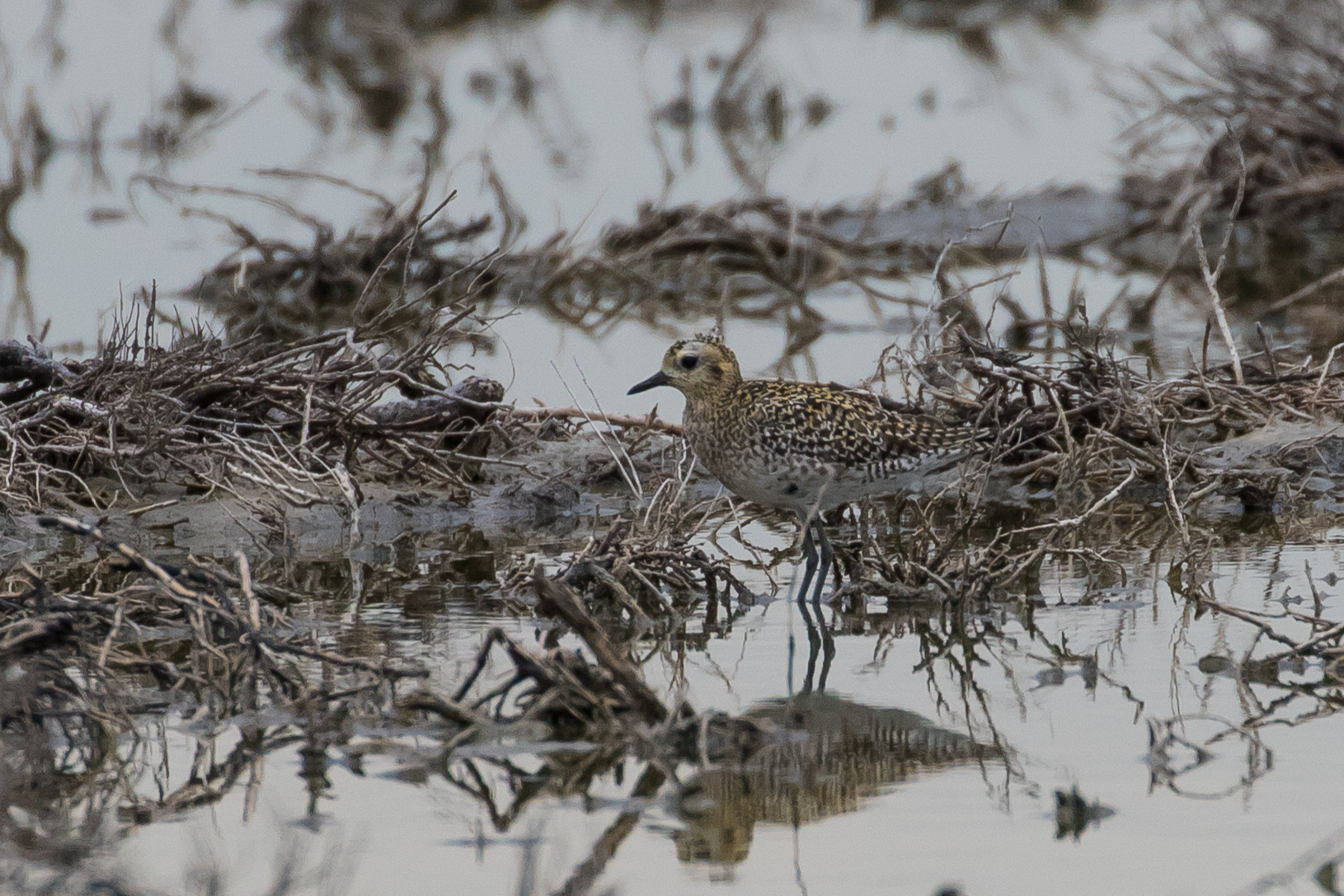
Then a small wader popped into my view — was this a tiny Sharpie, or was it a richly coloured Red-necked Stint? Neither: finally a LTS! I’d had a hunch that despite trying to turn every Sharpie into a Long-toed Stint, when I finally did find one I would just know. Sure enough, I was right. On this occasion the ID was instant and unequivocal. The jizz is just different, but perhaps what stood out most was how thin and dainty the bill is in comparison the Sharpies. Of course I lost it as soon as I took my bins away to try and find the spot to describe it to Paul, but with carefully scanning in the right spot Paul was able to relocate it.
We stayed with it for at least 15-20 minutes but the photo ops were crap, with the bird distant in the hazy midday light — the pic below is a heavy crop — but it’s now on my Australian and SA lists (let’s not analyse why lists are important ;-)). This was just Paul’s second for SA having seen his first nearly 20 years ago!
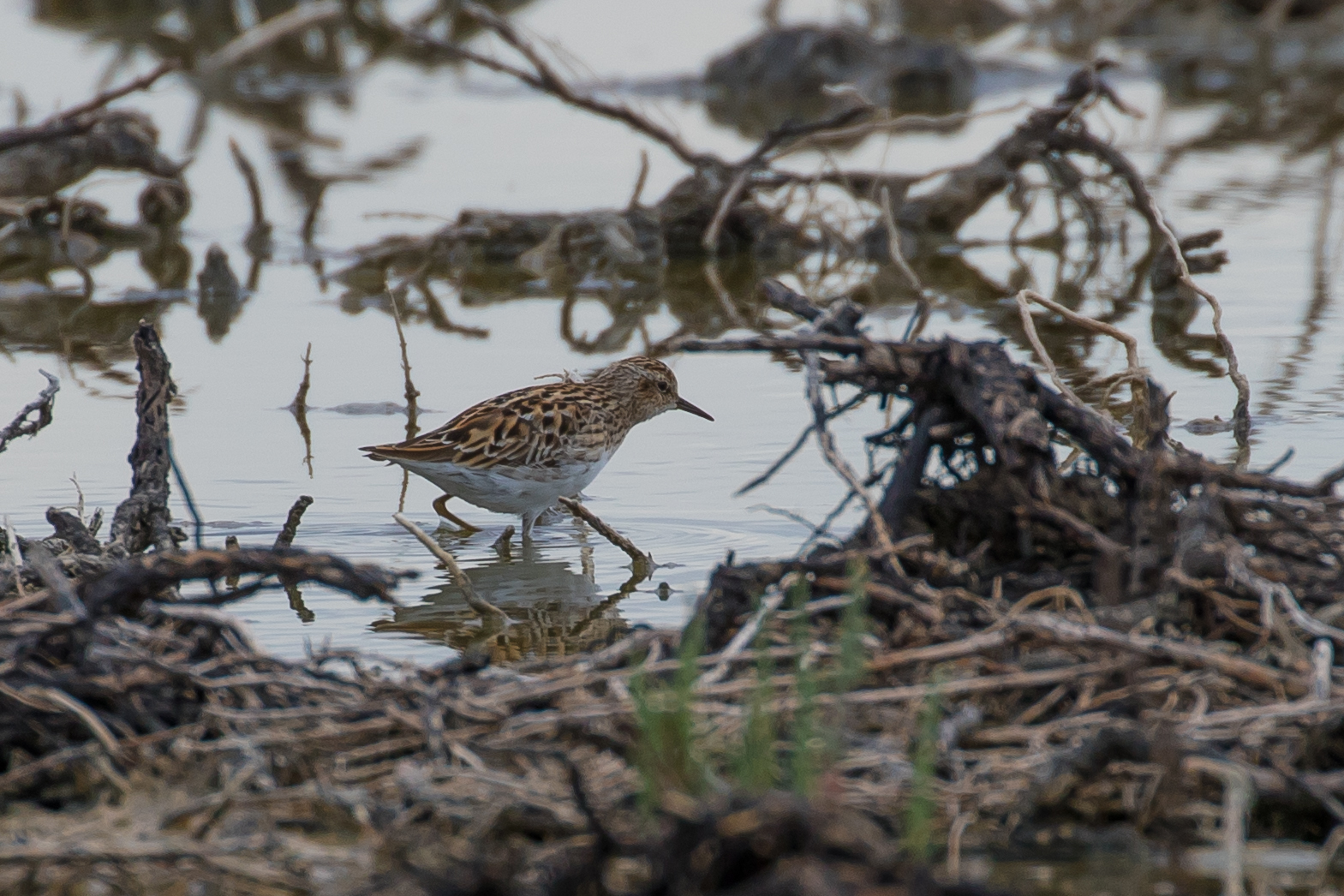
Oh, and in case you want to know where the various ponds are, here’s the map of the reserve.


Loved the story about the restore wetland, and in particular the photo of the banded plover. (Apologies for not being fully appreciative of the LTS but I have to confess I don’t quite get it)
J.x
Sent from my iPad
>